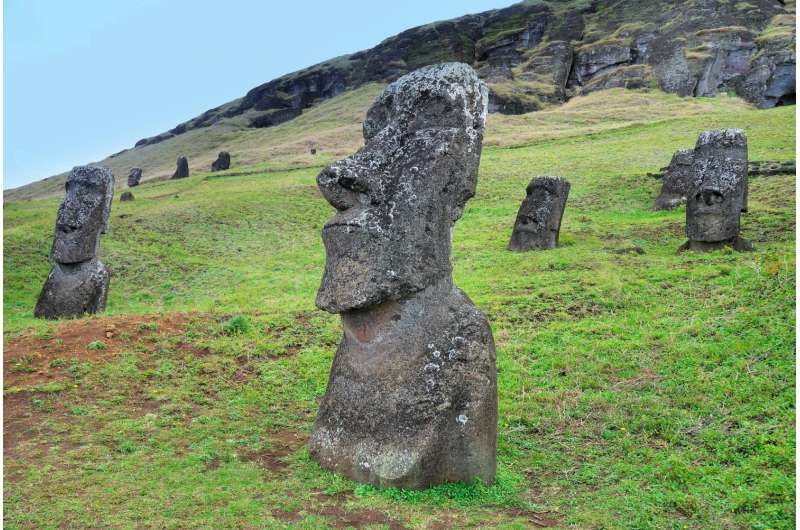Norway's Kon-Tiki museum returns human remains to Easter Island

Norway's Kon-Tiki Museum on Wednesday returned human remains taken from Easter Island by the explorer Thor Heyerdahl during his trans-Pacific raft expeditions in the 1950s.
A delegation of Easter Island and Chilean officials took part in a ceremony at the Oslo museum, the museum said.
The items returned were skulls from the Rapa Nui, the first inhabitants of the remote Chilean island in the Pacific.
"My grandfather would be proud of what we are about to accomplish," the explorer's granddaughter Liv Heyerdahl, director of the Kon-Tiki Museum, said in a statement.
"The return of objects to Rapa Nui will make sure that the Rapa Nui people hold legal ownership of their cultural objects," the museum said.
Four Easter Island representatives slept overnight in the museum beside the remains, part of a ritual aimed at awakening the spirits of the dead, delegation member Laura Tarita Rapu Alarcon told Norwegian news agency NTB.
She said the four spoke to the spirits in their local language and cooked food for them.
Ceremonies are also planned for the repatriation of the remains to Easter Island, where they will be brought to eight holy sites before being buried permanently.
Anthropologist and adventurer Heyerdahl became famous in 1947 when he and a crew of five crossed much of the Pacific on a reed raft, the Kon-Tiki.
Heyerdahl, who died in 2002 aged 87, later made a 1955 expedition to Easter Island, where he and his team dug up some 5,600 artifacts with the understanding that they would eventually be returned.
Some of the items were returned to Rapa Nui in 1986 and 2006.
A 2019 ceremony in Santiago announcing the planned return of thousands of other items was attended by Thor Heyerdahl Jr, who accompanied his father on his 1955 expedition when he was 17.
"The repatriation is a fulfillment of my father's promise to the Rapa Nui authorities that the objects would be returned after they had been analyzed and published," Heyerdahl Jr, who died in August, said at the 2019 ceremony.
Heyerdahl Sr had been seeking to prove his theory that the Polynesian islands could have been settled by prehistoric South American people using light balsa rafts, and not by settlers from Asia as most scholars believed.
Scientific journal Nature in September published DNA analysis showing that Heyerdahl was only partly right: the first people to settle Rapa Nui were Polynesians from the Western Pacific traveling east.
However, the analysis also showed people on Rapa Nui carry around four to 11 percent DNA from South American indigenous populations—likely from areas around Colombia—proving that the two populations had crossed paths, probably sometime between 1250 and 1430.
Journal information: Nature
© 2024 AFP



















